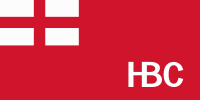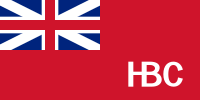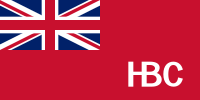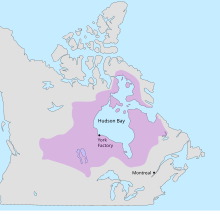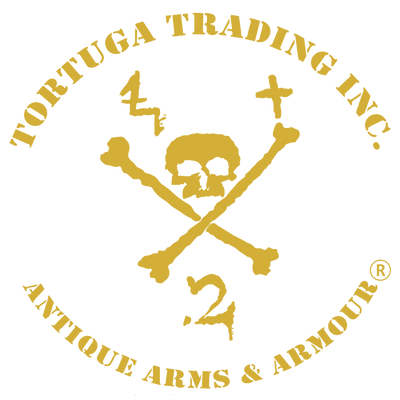A Rare and Important British Military Flintlock Militia or Volunteer Pistol by I, WILLIAMS
Circa. 1690's-1720
A Rare and Important British Flintlock Militia or Volunteer Pistol by I, WILLIAMS, circa. 1690's-1720. John Williams provided weapons for the British Ordnance, The East India Company, Hudson's Bay Company, and the British African Company. This style/form is thought to be established around the reign of King James II (1685-1689) and varieties began to be produced for the ordnance and for militia and volunteer units through the reigns of William & Mary (1689-1694) and King William III (1694-1702), Queen Anne (1702-1714), and King George I (1714-1727). 12", .64 caliber round two-stage smooth-bore barrel struck on the left side of breech with (2) oval "Proof" & "View" marks as well as the barrel makers mark a "STAR" over "A I". The barrel is secured to the stock by pins and the tang screw going through the stock from the bottom (which is an exceedingly early trait). The early convex banana shaped lock is secured to the stock by (3) side nails (screws), no bridle on the pan and has the maker's name engraved "I, WILLIAMS" (the frizzen spring is an old replacement). The pistol is in its original flintlock configuration. All steel surfaces have areas of salt & pepper rust pitting (some areas worse than others). The brass furniture conforms to other known British pistols of this period which includes a trigger guard with a rounded front disc finial as later used for Sea Service finials, a butt cap with short spur or lobes, and an engraved serpent side plate. The stock has a raised "beaver tail" carved around the barrel tang and is missing a sliver of wood on the left side of the barrel tang, has a restored fore-end, scratches and dings from years of service and handling. Wood ram rod (most likely a later replacement). A historically important flintlock pistol made by a very established maker who provided weapons for many firms who sold and traded weapons to the American colonies. 19" overall length.
RESTORATION NOTES: The following is my opinion. Someone in the 20th century attempted to restore the pistol and did a poor job. The pistol has professionally been restored where a 7" portion of the fore-end has been replaced (extremely hard to see). The stock has been refinished.
TTI-565122
About the maker: I, WILLIAMS, (John Williams 3). Apprentice to Thomas Williams, 1693; free of Gunmakers Co., 1700. Proof piece, 1701. Elected Assistant, 1723; Master, 1728. Gun maker to Ordnance, 1702-1719; East India Company., 1711-1726; Hudson's Bay Company., 1715-1731; Royal African Company., 1715-1722. He Proved 34,261 muskets, 697 1/2 pairs of pistols, 125 musketoons, 50 blunderbusses, 1721-1731. He died in 1731. The business continued by his widow, Elizabeth.
BRITISH EAST INDIA COMPANY:

The East India Company (EIC)[a] was an English, and later British, joint-stock company founded in 1600.[4] It was formed to trade in the Indian Ocean region, initially with the East Indies (the Indian subcontinent and Southeast Asia), and later with Qing China. The company seized control of large parts of the Indian subcontinent, colonised parts of Southeast Asia and Hong Kong after the First Opium War, and maintained trading posts and colonies in the Persian Gulf Residencies.[5]
Originally chartered as the "Governor and Company of Merchants of London Trading into the East-Indies",[6][7] the company rose to account for half of the world's trade during the mid-1700s and early 1800s,[8] particularly in basic commodities including cotton, silk, indigo dye, sugar, salt, spices, saltpetre, tea, and opium. The company also ruled the beginnings of the British Empire in India.[8][9]
The company eventually came to rule large areas of India, exercising military power and assuming administrative functions. Company rule in India effectively began in 1757 after the Battle of Plassey and lasted until 1858 when, following the Indian Rebellion of 1857, the Government of India Act 1858 led to the British Crown assuming direct control of India in the form of the new British Raj.
Despite frequent government intervention, the company had recurring problems with its finances. The company was dissolved in 1874 as a result of the East India Stock Dividend Redemption Act enacted one year earlier, as the Government of India Act had by then rendered it vestigial, powerless, and obsolete. The official government machinery of the British Raj had assumed its governmental functions and absorbed its armies.
HUDSON'S BAY COMPANY: according to Wikipedia...
After incorporation by English royal charter in 1670, the company functioned as the de facto government in parts of North America for nearly 200 years until the HBC sold the land it owned (the entire Hudson Bay drainage basin, known as Rupert's Land) to Canada in 1869 as part of the Deed of Surrender,[10][11] authorized by the Rupert's Land Act 1868.
History
17th century
For much of the 17th century the French, based on their colony of New France, operated a de facto monopoly in the North American fur trade. Two French traders, Pierre-Esprit Radisson and Médard des Groseilliers (Médard de Chouart, Sieur des Groseilliers), Radisson's brother-in-law, learned from the Cree that the best fur country lay north and west of Lake Superior, and that there was a "frozen sea" still further north.[18] Assuming this was Hudson Bay, they sought French backing for a plan to set up a trading post on the Bay in order to reduce the cost of moving furs overland. According to Peter C. Newman, "concerned that exploration of the Hudson Bay route might shift the focus of the fur trade away from the St. Lawrence River, the French governor", Marquis d'Argenson (in office 1658–61), "refused to grant the coureurs des bois permission to scout the distant territory".[18] Despite this refusal, in 1659 Radisson and Groseilliers set out for the upper Great Lakes basin. A year later they returned to Montreal with premium furs, evidence of the potential of the Hudson Bay region. Subsequently, they were arrested by French authorities for trading without a license and fined, and their furs were confiscated by the government.[19]
Determined to establish trade in the Hudson Bay area, Radisson and Groseilliers approached a group of English colonial merchants in Boston, Massachusetts to help finance their explorations. The Bostonians agreed on the plan's merits, but their speculative voyage in 1663 failed when their ship ran into pack ice in Hudson Strait. Boston-based English commissioner Colonel George Cartwright learned of the expedition and brought the two to England to raise financing.[18] Radisson and Groseilliers arrived in London in 1665 at the height of the Great Plague. Eventually, the two met and gained the sponsorship of Prince Rupert. Prince Rupert introduced the two to his cousin, the reigning king - Charles II.[20] In 1668 the English expedition acquired two ships, the Nonsuch and the Eaglet, to explore possible trade into Hudson Bay. Groseilliers sailed on the Nonsuch, commanded by Captain Zachariah Gillam, while the Eaglet was commanded by Captain William Stannard and accompanied by Radisson. On 5 June 1668, both ships left port at Deptford, England, but the Eaglet was forced to turn back off the coast of Ireland.[19][21]
The Nonsuch continued to James Bay, the southern portion of Hudson Bay, where its explorers founded, in 1668, the first fort on Hudson Bay, Charles Fort[22] at the mouth of the Rupert River. (It later became known as "Rupert House", and developed as the community of present-day Waskaganish, Quebec.) Both the fort and the river were named after the sponsor of the expedition, Prince Rupert of the Rhine, one of the major investors and soon to become the new company's first governor. After a successful trading-expedition over the winter of 1668–69, Nonsuch returned to England on 9 October 1669 with the first cargo of fur resulting from trade in Hudson Bay.[19] The bulk of the fur – worth £1,233 – was sold to Thomas Glover, one of London's most prominent furriers. This and subsequent purchases by Glover proved the viability of the fur trade in Hudson Bay.[23]
A royal charter from King Charles II incorporated "The Governor and Company of Adventurers of England, trading into Hudson's Bay" on 2 May 1670.[10] The charter granted the company a monopoly over the region drained by all rivers and streams flowing into Hudson Bay in northern parts of present-day Canada. The area was named "Rupert's Land"[24] after Prince Rupert,[25] the first governor of the company appointed by the King. This drainage basin of Hudson Bay spans 3,861,400 square kilometres (1,490,900 sq mi),[26] comprising over one-third of the area of modern-day Canada, and stretches into the present-day north-central United States. The specific boundaries remained unknown at the time. Rupert's Land would eventually become Canada's largest land "purchase" in the 19th century.[27]
The HBC established six posts between 1668 and 1717. Rupert House[28](1668, southeast), Moose Factory[29] (1673, south) and Fort Albany,[30] Ontario (1679, west) were erected on James Bay; three other posts were established on the western shore of Hudson Bay proper: Fort Severn (1689), York Factory (1684) and Fort Churchill (1717). Inland posts were not built until 1774. After 1774, York Factory became the main post because of its convenient access to the vast interior waterway-systems of the Saskatchewan and Red rivers. Originally called "factories" because the "factor", i.e., a person acting as a mercantile agent did business from there, these posts operated in the manner of the Dutch fur-trading operations in New Netherland. By adoption of the Standard of Trade in the 18th century, the HBC ensured consistent pricing throughout Rupert's Land. A means of exchange arose based on the "Made Beaver" (MB); a prime pelt, worn for a year and ready for processing: "the prices of all trade goods were set in values of Made Beaver (MB) with other animal pelts, such as squirrel, otter and moose quoted in their MB (made beaver) equivalents. For example, two otter pelts might equal 1 MB".[31]
During the fall and winter, First Nations men and European trappers accomplished the vast majority of the animal trapping and pelt preparation. They travelled by canoe and on foot to the forts to sell their pelts. In exchange they typically received popular trade-goods such as knives, kettles, beads, needles, and the Hudson's Bay point blanket. The arrival of the First Nations trappers was one of the high points of the year, met with pomp and circumstance. The highlight was very formal, an almost ritualized "Trading Ceremony" between the Chief Trader and the Captain of the aboriginal contingent who traded on their behalf.[32] During the initial years of the fur trade, prices for items varied from post to post.[33]
The early coastal factory model of the English contrasted with the system of the French, who established an extensive system of inland posts at native villages and sent traders to live among the tribes of the region, learning their languages and often forming alliances through marriages with indigenous women. In March 1686 the French sent a raiding party under the Chevalier des Troyes more than 1,300 km (810 mi) to capture the HBC posts along James Bay. The French appointed Pierre Le Moyne d'Iberville, who had shown great heroism during the raids, as commander of the company's captured posts. In 1687 an English attempt to resettle Fort Albany failed due to strategic deceptions by d'Iberville. After 1688 England and France were officially at war, and the conflict played out in North America as well. D'Iberville raided Fort Severn in 1690 but did not attempt to raid the well-defended local headquarters at York Factory. In 1693 the HBC recovered Fort Albany; d'Iberville captured York Factory in 1694, but the company recovered it the next year.[34]: 151–158
In 1697 d'Iberville again commanded a French naval raid on York Factory. On the way to the fort he defeated three ships of the Royal Navy in the Battle of Hudson's Bay (5 September 1697), the largest naval battle in the history of the North American Arctic. D'Iberville's depleted French force captured York Factory by laying siege to the fort and pretending to be a much larger army. The French retained all of the outposts except Fort Albany until 1713. (A small French and Indian force attacked Fort Albany again in 1709 during Queen Anne's War but was unsuccessful. The economic consequences of the French possession of these posts for the company were significant; the HBC did not pay any dividends for more than 20 years. See Anglo-French conflicts on Hudson Bay.[34]: 160–164
18th century
With the ending of the Nine Years' War in 1697, and the War of the Spanish Succession in 1713 with the signing of the Treaty of Utrecht, France had made substantial concessions. Among the treaty's many provisions, it required France to relinquish all claims to Great Britain on the Hudson Bay, which again became a British possession.[35] (The Kingdom of Great Britain had been established following the union of Scotland and England in 1707).
After the treaty, the HBC built Prince of Wales Fort, a stone star fort at the mouth of the nearby Churchill River.[34]: 202–206 In 1782, during the American Revolutionary War, a French squadron under Jean-François de Galaup, comte de Lapérouse captured and demolished York Factory and Prince of Wales Fort in support of the American rebels.[34]: 366–371
In its trade with native peoples, Hudson's Bay Company exchanged wool blankets, called Hudson's Bay point blankets, for the beaver pelts trapped by aboriginal hunters. By 1700, point blankets accounted for more than 60 per cent of the trade.[36] The number of indigo stripes (a.k.a. points) woven into the blankets identified its finished size. A long-held misconception is that the number of stripes was related to its value in beaver pelts.[37]
A parallel may be drawn between the HBC's control over Rupert's Land with the trade monopoly and government functions enjoyed by the East India Company over India during roughly the same period. The HBC invested £10,000 in the East India Company in 1732, which it viewed as a major competitor.[38]
Hudson's Bay Company's first inland trading post was established by Samuel Hearne in 1774 with Cumberland House, Saskatchewan.[39][40]
Conversely, a number of inland HBC "houses" pre-date the construction of Cumberland House, in 1774. Henley House, established in 1743, inland from Hudson Bay, at the confluence of the Albany and Kabinakagami Rivers, was dependent on Albany River – Fort Albany for lines of communication, was not "finished" until 1768.[41] Next, the inland houses of Split Lake and Nelson Houses were established between 1740 and 1760. These were dependent on York River – York Factory and Churchill River, respectively. Although not inland, Richmond Fort was established in 1749. This was on an island within Hudson Bay. It was titled a "New Discovery" in 1749, and by 1750 was titled Richmond Gulf. The name was changed to Richmond Fort and given the abbreviation RF from 1756 to 1759, it served mainly as a trade goods and provisions storage location.[42] Additional inland posts were Capusco River and Chickney Creek, both circa 1750. Likewise, Brunswick (1776), New Brunswick (1777), Gloucester (1777), Upper Hudson (ca. 1778), Lower Hudson (1779), Rupert, and Wapiscogami Houses were established in the decade of the 1770s.[43][44][45][46][47] These post-date Cumberland House, yet speak to the expanding inland incursion of the HBC in the last quarter of the 18th century. Minor posts also during this time period include Mesackamy/Mesagami Lake (1777), Sturgeon Lake (1778), Beaver Lake Posts.[48][49]
In 1779, other traders founded the North West Company (NWC) in Montreal as a seasonal partnership to provide more capital and to continue competing with the HBC. It became operative for the outfit of 1780 and was the first joint-stock company in Canada and possibly North America. The agreement lasted one year. A second agreement established in 1780 had a three-year term. The company became a permanent entity in 1783.[50] By 1784, the NWC had begun to make serious inroads into the HBC's profits.[51]
BRITISH ROYAL AFRICAN COMPANY:

In 1619, some 20 Africans arrived at Jamestown, Virginia, where they were purchased from Dutch privateers to aid in the English colony’s lucrative, labor-intensive cultivation of tobacco. As profits piled up and slavery spread through the American colonies, the British crown decided to exert control over the slave trade to the colonies (and the wealth it generated). According to the Navigation Act of 1660, only English-owned ships could enter colonial ports. That same year, King Charles II granted a charter to the Company of Royal Adventurers Trading to Africa. Led by the king’s younger brother James, the Duke of York (later King James II), this group had a monopoly on British trade with West Africa, including gold, silver and slaves. Thanks to England’s war with the Netherlands, the original company collapsed under mounting debts in 1667, reemerging in 1672 with a new royal charter and a new name: the Royal African Company (RAC).
Ref. p. 117. GUNMAKERS OF LONDON 1350-1850, by, Howard L. Blackmore, c. 1986
Ref. pp. 43-55. British Military Pistols and Associated Edged Weapons 1603-1887. By, Robert Brooker, c. 2016.
Ref: See; BATTLE WEAPONS of the American Revolution. by, George C. Neumann. c. 1998, pp. 14, 232.
Ref: See; Small Arms of the British Forces in America 1664-1815, by De Witt Bailey, Ph. D., c. 2009, pp. 78-82, 215-220.





















